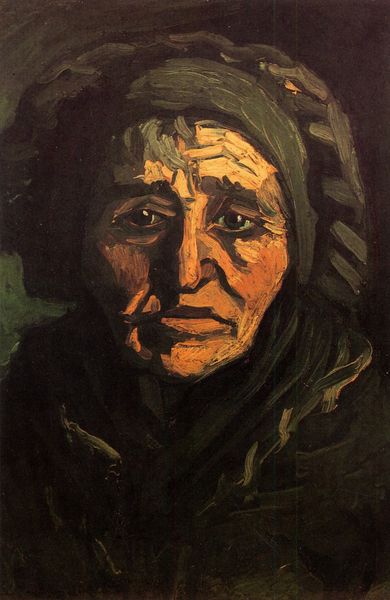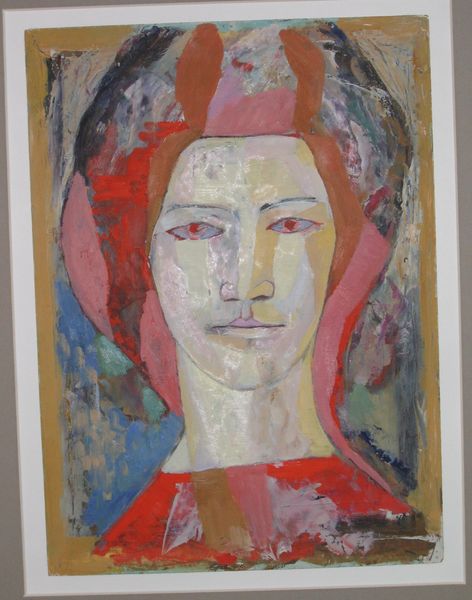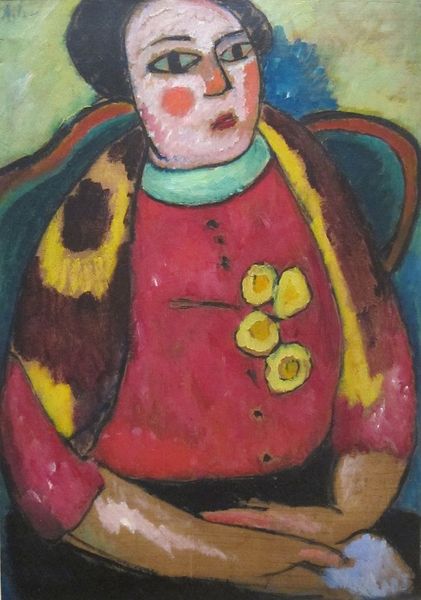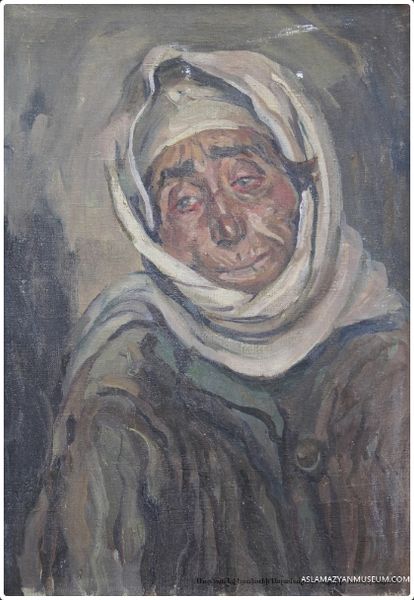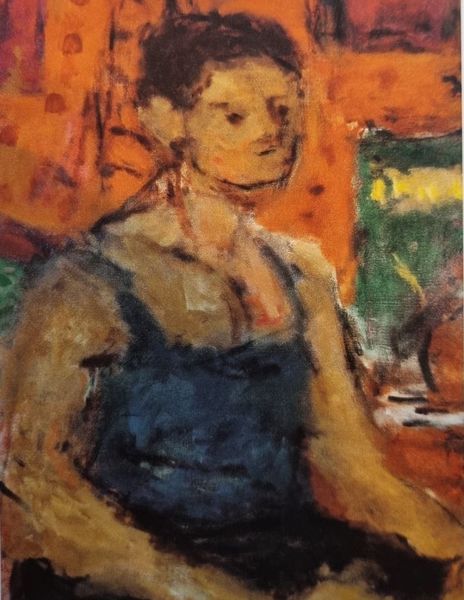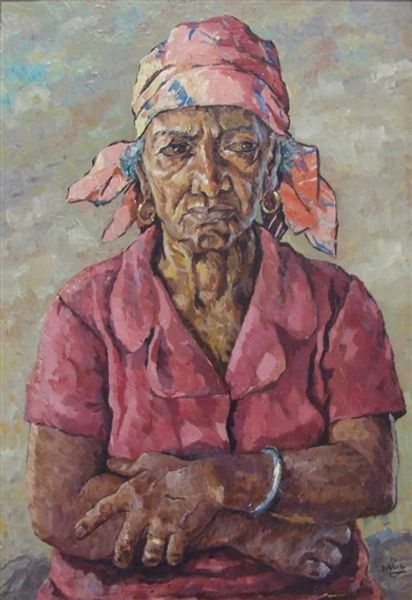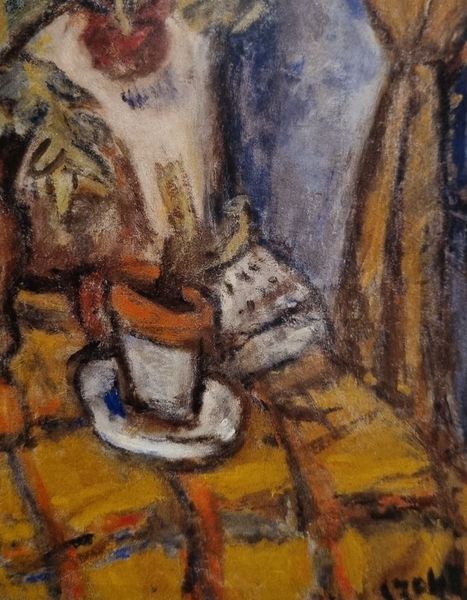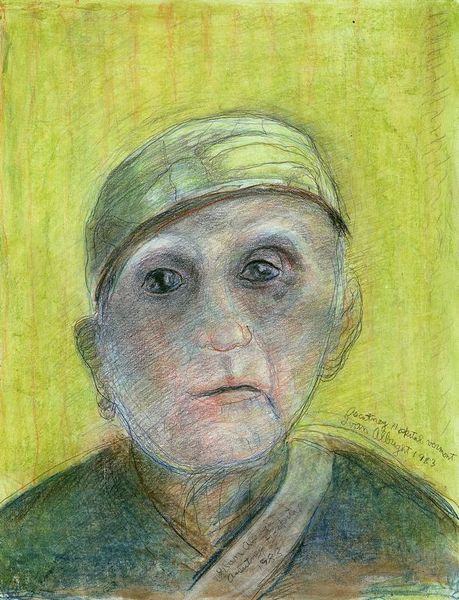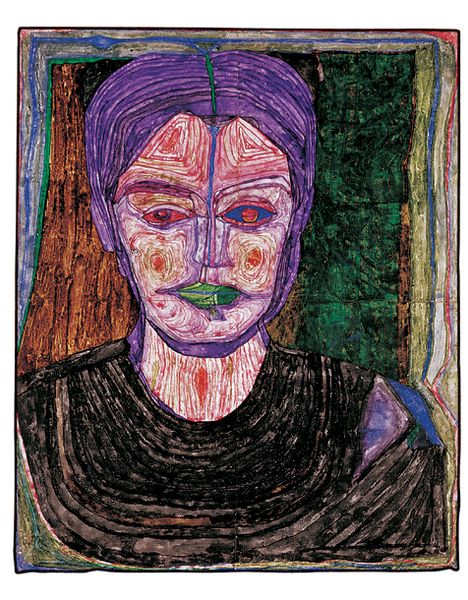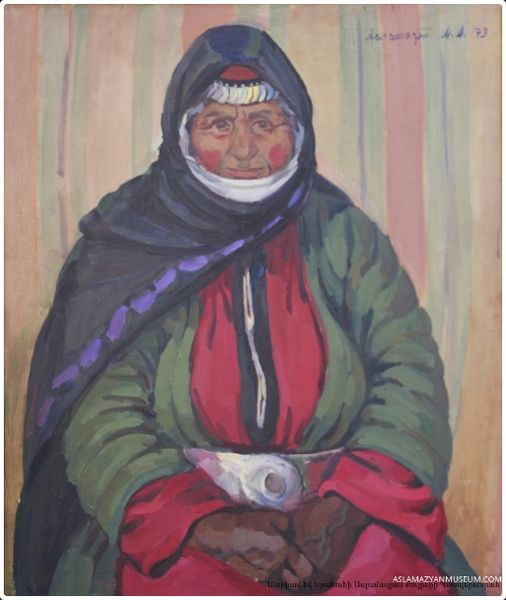
Copyright: Alexandru Ciucurencu,Fair Use
Editor: Here we have Alexandru Ciucurencu's 1940 oil painting, "Mother". The russet tones and her solemn gaze create a poignant, intimate feeling. What emotional narrative do you see unfolding? Curator: Look at how the light catches the side of her face, how her expression merges realism and a deeper symbolic interpretation. Observe her hands. Aren’t hands the first tools we know? Editor: Yes, I notice her hands now, they're clasped somewhat nervously, which seems to heighten the feeling of melancholy. Curator: Indeed. I see generations imprinted on her face and hands, not just in the lines and the brushstrokes. Think about the iconography of the "Mother" archetype - enduring, resilient, but also bearing the weight of history. Doesn't she embody the strength of those who came before, a vessel of cultural memory? Do you see that too? Editor: Absolutely, I also notice the dark color palette. Perhaps it’s symbolic of the difficult period of World War II, when it was painted? It feels significant that even her clothes have an earthy palette, blending her with the background. Curator: Yes, that echoes through. Look at how color became visual code to express inner emotion and social turbulence, so in essence Ciucurencu weaves social narrative into this painting! It’s not merely about capturing a likeness; it's about preserving collective memory, offering future viewers the possibility of remembrance. Editor: This makes me consider that this portrait has become an emblem of a complex shared experience. I will see portraits differently. Thank you. Curator: And I see how art opens pathways of conversation between people. It holds hope, for everyone.
Comments
No comments
Be the first to comment and join the conversation on the ultimate creative platform.
